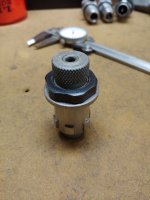Marco Califo
New member
Decap clean sort resize
I buy bulk range pickup brass on occasion. After decapping, and cleaning well, I sort by headstamp. This enables me to immediately remove Blazer, USA, Freedom, and other brass of suspect suitability. I like CBC, S&B, GBW and Starline (but you won't find Starline in range pickup). I keep all my WW together, all my Major manufacturers together. That way I can load 500 identical WW cases. I also end up with R-P, FC and few others in a mixed pile or bin. These get reloaded once and left at the usually indoor ranges where I cannot retrieve them.
Differences between headstamps should be minor, but when you isolate large groups, and work on those, one group at a time, you know that any difficulty you may have is not specific to variance between headstamps.
I buy bulk range pickup brass on occasion. After decapping, and cleaning well, I sort by headstamp. This enables me to immediately remove Blazer, USA, Freedom, and other brass of suspect suitability. I like CBC, S&B, GBW and Starline (but you won't find Starline in range pickup). I keep all my WW together, all my Major manufacturers together. That way I can load 500 identical WW cases. I also end up with R-P, FC and few others in a mixed pile or bin. These get reloaded once and left at the usually indoor ranges where I cannot retrieve them.
Differences between headstamps should be minor, but when you isolate large groups, and work on those, one group at a time, you know that any difficulty you may have is not specific to variance between headstamps.

